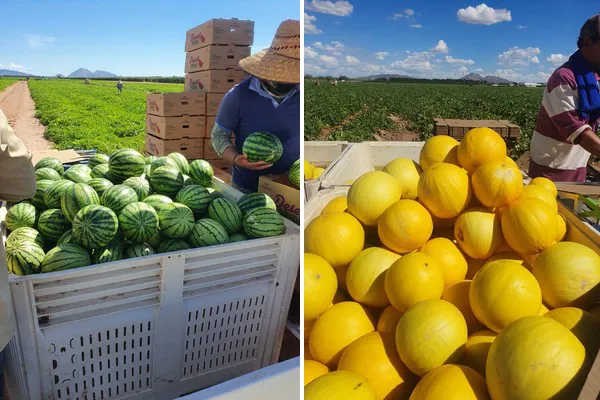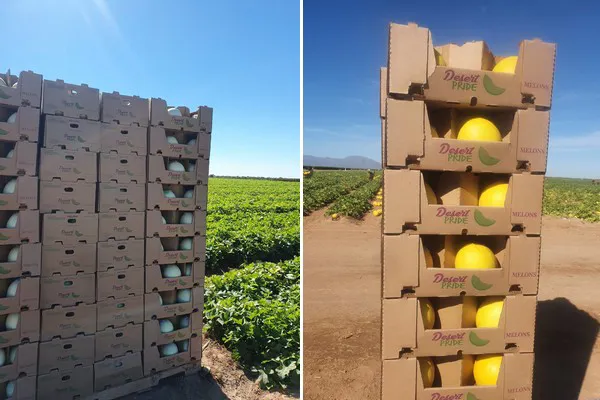It has been a slow start to the watermelon season out of Sonora. Scattered rains throughout September backed up the crop a few weeks from its original projected start date of October 3. “We’ve been receiving mini watermelons since early October and large conventional bin watermelons since mid-October,” says Mikee Suarez with MAS Melons & Grapes. “Both watermelons and mini watermelons come in from MAS’s partner growers’ fields located in the cities of Hermosillo and Caborca in the state of Sonora, Mexico.
Although the volume planted is about the same on both commodities compared to last year, demand is exceeding supplies with the crop moving into the winter months. “Our volume will continue to be the same for the next few weeks and then drop in early December,” said Suarez. Honeydew and orange candy melons are also part of the melon category and these varieties have been in supply since early October. Orange candy season has wrapped up, but Honeydew will be available out of Sonora until early December.
In general, Suarez is happy with the quality of fruit. “Growers have done an excellent job keeping the fruit sweet and clean. Conventional watermelons are cutting well,” he said. Seedless conventional watermelons are offered in bins and cartons while mini watermelons are offered in cartons of all sizes.

Exports to Japan are up
MAS’ export program mostly features Honeydew and orange flesh melons to Japan. This season has been good so far, on track to surpass last year’s export business. “This is likely due to demand from Japan rising as the country is as the tail end of its post-pandemic days,” shared Suarez. It is an interesting uptick as the strong US dollar has made melons relatively expensive for the Japanese consumer. “The weak position of the Japanese Yen against the US dollar has made export goods from the US more expensive, yet numbers seem to be on the rise.”
MAS Melons & Grapes will continue to ship the same items for the winter months.

 For more information:
For more information:
Mikee Suarez
MAS Melons & Grapes
Ph: +1 (520) 377-2373
Mikee@masmelons.com
www.masmelons.com
